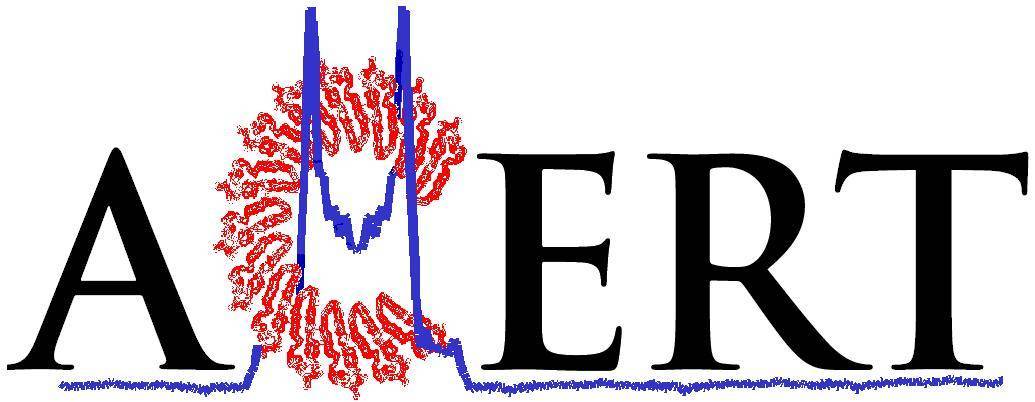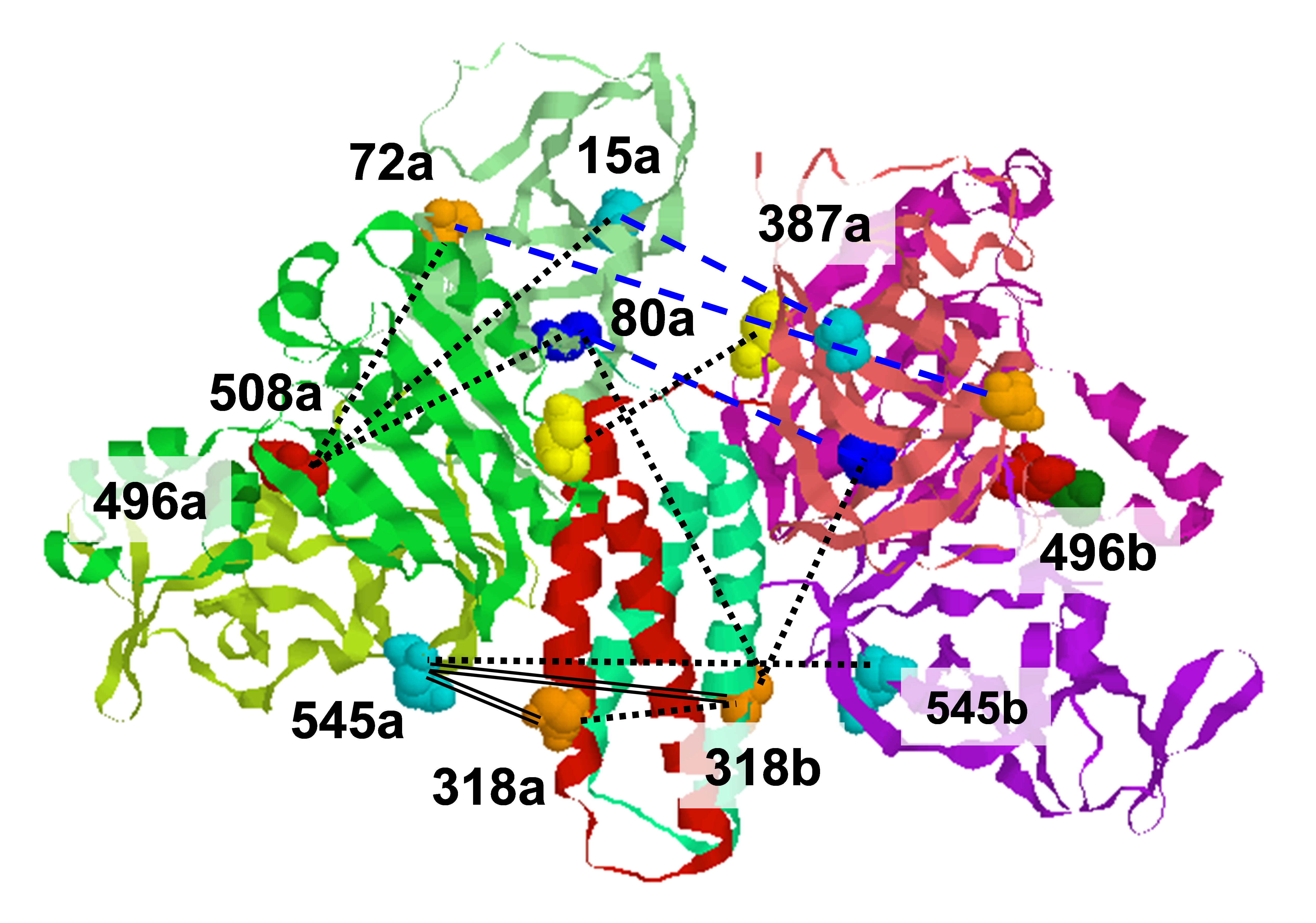.svg) National Institute of General Medical Sciences |
 |
 |
National Biomedical Resource for |
| ACERT's Service and Collaborative Projects | ||
At the base of the bacterial flagella, a cytoplasmic rotor (the C-ring) generates torque and reverses rotation sense in response to stimuli. The bulk of the C-ring forms from many copies of the proteins FliG, FliM, and FliN, which together constitute the switch complex. To help resolve outstanding issues regarding C-ring architecture, we investigated interactions between FliM and FliG from Thermotoga maritima with X-ray crystallography and pulsed dipolar ESR spectroscopy (PDS). A new crystal structure of an 11-unit FliG:FliM complex produces a large arc with a curvature consistent with the dimensions of the C-ring. Previously determined structures along with this new structure provided a basis to test switch complex assembly models. PDS combined with mutational studies and targeted cross-linking reveal that FliM and FliG interact through their middle domains to form both parallel and antiparallel arrangements in solution (see below). Residue substitutions at predicted interfaces disrupt higher-order complexes that are primarily mediated by contacts between the C-terminal domain of FliG and the middle domain of a neighboring FliG molecule. Spin separations among multi-labeled components as measured by PDS fit a self-consistent model that agrees well with electron microscopy images of the C-ring. An activated form of the response regulator CheY destabilizes the parallel arrangement of FliM molecules to perturb FliG alignment in a process that may reflect the onset of rotation switching from clockwise and counterclockwise. These data suggest a model of C-ring assembly in which intermolecular contacts among FliG domains provide a template for FliM assembly and cooperative transitions. The sensitive and stable performance of PDS at ACERT was instrumental for this sophisticated study conducted over a year-long period on multiple samples at varying conditions. Funding: P41GM105321 (to J.H. Freed), R01GM604664 (to B.R. Crane), R15GM063514 (to C.J. Halkides). Publication: R. Sircar, P.P. Borbat, M.J. Lynch, J. Bhatnagar, M. Beyersdorf, C.J. Halkides, J.H. Freed, and B.R. Crane. J. Mol. Biol. 427, 867-886 (2015) (PMC4323944). |
||
|
||
|
R. Sircar (Department of Chemistry and Chemical Biology, Cornell University, Ithaca, New York) P.P. Borbat (Department of Chemistry and Chemical Biology, Cornell University, Ithaca, NY; ACERT) M.J. Lynch, J. Bhatnagar (Department of Chemistry and Chemical Biology, Cornell University, Ithaca, New York) M. Beyersdorf, C.J. Halkides (Department of Chemistry and Biochemistry, Unversity of North Carolina Wilmington, Wilmington, NC) J.H. Freed (Department of Chemistry and Chemical Biology, Cornell University, Ithaca, New York; ACERT) and B.R. Crane (Department of Chemistry and Chemical Biology, Cornell University, Ithaca, New York) |
||
|
|
About ACERT Contact Us |
Research |
Outreach |
ACERT is supported by grant 1R24GM146107 from the National Institute of General Medical Sciences (NIGMS), part of the National Institutes of Health. |
|||||
| ||||||||